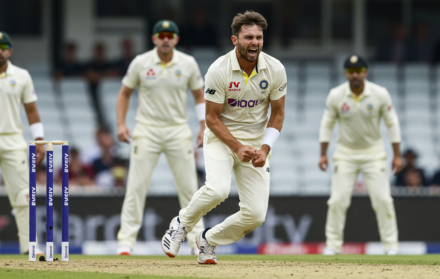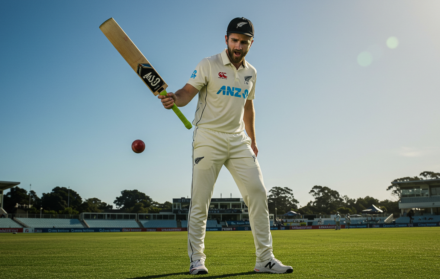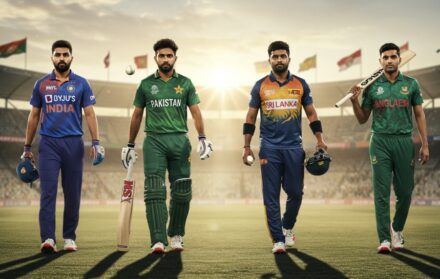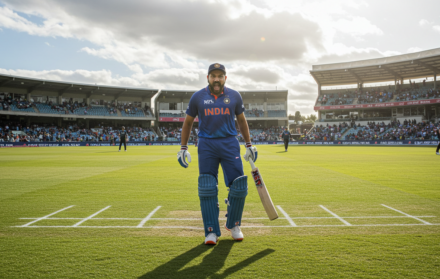
Competitive Cricket Tournaments and Leagues for Children
The world of cricket is not just reserved for international stars and seasoned players. A burgeoning realm of cricket tournaments and leagues for children is taking the sport by storm, nurturing young talent and fostering a love for the game from an early age.
If you’re a parent, coach, or enthusiast looking to introduce the younger generation to the thrill of cricket, understanding the landscape of these tournaments and leagues is essential.
Our in-depth guide is tailored to spotlight the best cricket tournaments and leagues for children. These platforms not only offer kids a chance to showcase their budding skills but also teach them the values of teamwork, discipline, and sportsmanship. With a surge in interest and investment in youth cricket, there’s never been a better time to get children involved.
From local community leagues to national level tournaments, our compilation covers a spectrum of opportunities suitable for various age groups and skill levels. Delve into our curated list and discover the perfect platform for young cricketers to shine, learn, and most importantly, enjoy the game.
Join us as we navigate the vibrant world of cricket tournaments and leagues for children, ensuring the future stars of cricket get the best start possible.
The Benefits of Cricket for Children

The benefits of cricket for children are numerous and have a positive impact on their physical, mental, and social development. Here is a list of the benefits:
Physical fitness: Playing cricket is not just about hitting the ball or taking wickets. It’s a full-body workout that enhances cardiovascular fitness, coordination, and bolsters overall physical strength, ensuring players remain agile and energetic.
Teamwork and cooperation: Cricket is a team sport where every player has a role. It necessitates players to work in unison, helping children hone their communication skills, foster collaboration, and develop a sense of empathy towards teammates.
Discipline and focus: The game of cricket demands patience, especially during longer formats. It instills discipline in young players and teaches them the significance of maintaining focus for extended durations, crucial for both batting and bowling.
Sportsmanship and fair play: Cricket is more than just winning or losing. It ingrains values of sportsmanship and fair play in children, emphasizing the importance of respecting opponents, officials, adhering to rules, and gracefully accepting the outcomes of the game.
Problem-solving and decision-making: On the cricket field, situations change rapidly. This dynamic nature of the game sharpens children’s problem-solving skills and enhances their decision-making abilities, preparing them for real-life challenges.
Confidence building: Mastery over cricket techniques and strategies boosts a child’s morale. As they refine their skills and play pivotal roles in their team’s triumphs, their self-confidence witnesses a significant surge.
Mental well-being: Cricket is not just a physical activity; it’s a mental stimulant. Engaging in the sport releases endorphins, elevating mood, alleviating stress, and playing a role in warding off anxiety and depression.
Long-lasting friendships: Shared experiences on the cricket field create bonds. Playing cricket allows children to forge friendships, often deep and enduring, that can span a lifetime.
Appreciation of diversity: Cricket is a global sport, played and loved by diverse nations. It offers children a window to different cultures and backgrounds, fostering a spirit of inclusivity and a genuine appreciation for diversity.
By immersing themselves in cricket, children not only enjoy the thrill of the game but also reap multifaceted benefits that enrich their overall development and well-being.
Popular Cricket Tournaments and Leagues for Children
Cricket, a sport deeply embedded in the hearts of millions, has seen a surge in its popularity among the younger generation. Recognizing this enthusiasm, numerous tournaments and leagues have been established specifically for children. Here’s a look at some of the most popular ones:
Junior Premier League (JPL): This league provides a platform for budding cricketers to showcase their talent. With teams from various regions participating, the JPL is a melting pot of young talent from across the country.
Youth Cricket Championship: An annual event that brings together teams from different schools and clubs. It’s a fantastic opportunity for children to experience competitive cricket and learn from their peers.
Under-13 Cricket World Cup: A global event that sees participation from countries worldwide. It’s a chance for young cricketers to represent their nation and compete at an international level.
Little Champs Cricket League: Aimed at the grassroots level, this league focuses on children under the age of 10. It emphasizes learning, enjoyment, and the spirit of the game.
Schools Cricket League: Organized by various educational institutions, this league promotes cricket among school-going children. It’s a blend of education and sport, ensuring holistic development.
Children’s Cricket Carnival: A fun-filled event that combines cricket with entertainment. It’s not just about competition but also about enjoying the game and making lifelong memories.
These tournaments and leagues play a pivotal role in nurturing young talent, teaching them the nuances of the game, and instilling values like teamwork, discipline, and sportsmanship. By participating in these events, children get a chance to grow, learn, and most importantly, develop a deep-rooted love for the game of cricket.
Rules and Format of Children’s Cricket Tournaments

When participating in children’s cricket tournaments, it is essential to familiarize yourself with the rules and format. Understanding the rules and format of children’s cricket tournaments helps children enjoy the game and develop their cricket skills in a safe environment. Coaches, parents, and organizers play a vital role in conducting fair and enjoyable tournaments, nurturing a love for the sport among young cricketers.
Key factors to take into account include:
1. Teams: Tournaments consist of multiple teams, each with a specific number of players. The number of players can vary depending on the tournament and age group.
2. Overs: Matches are divided into overs, with each over consisting of a set number of deliveries. The number of overs can vary, with younger children usually playing shorter matches.
3. Rules: Rules are adjusted to cater to the skill level and safety of the participants. Understanding the rules is crucial for all participants to ensure fair play and a safe environment. Certain rules, such as lbw (leg before wicket) and fielding restrictions, may be modified.
4. Pitch Size: In children’s tournaments, the size of the pitch is smaller compared to adult matches. This smaller pitch size allows for easier gameplay and provides a better experience for young cricketers.
5. Equipment: Children require appropriate cricket equipment, including bats, balls, and protective gear. It is essential to ensure that the equipment is suitable and safe for children to use.
6. Scoring: Scoring follows standard cricket rules, with runs being awarded based on boundaries hit and runs scored between the wickets. The methods of keeping score may vary, but understanding the scoring system is important for all participants.
7. Fair Play: Fair play and sportsmanship are crucial in children’s cricket tournaments. Participants must adhere to the rules, respect their opponents, and display good sporting behavior. Creating a positive and respectful environment contributes to the enjoyment and development of young cricketers.
By incorporating these rules and formats into children’s cricket tournaments, we can create an environment where children can learn, grow, and have fun playing the sport they love.
Age Categories and Skill Levels
Matching the appropriate age group with the corresponding skill level is crucial when organising cricket tournaments and leagues for children. Here is the breakdown of age categories and skill levels:
Under 8: This category is for beginners who are just starting to learn cricket. Focus on building foundational skills and introducing the game in a fun and supportive environment.
Under 10: Children in this age group can range from beginners to intermediate players. They have a basic understanding of the game and are ready to develop their skills further. Provide opportunities for skill development and game experience.
Under 12: This category is for intermediate to advanced players. They have a good grasp of the game and are ready to enhance their skills in batting, bowling, and fielding. Introduce more competitive gameplay to challenge their abilities.
Under 14: Advanced players fall into this age category. They have developed strong skills in all aspects of the game and are ready for more challenging gameplay. Coaching should focus on refining techniques, tactics, and strategies.
Under 16: Similar to the Under 14 category, players in this age group are also considered advanced. They should continue to develop their skills and knowledge of the game, with a focus on preparing for higher levels of competition.
Ensuring that children are placed in the appropriate age category and skill level is important for providing them with the best cricket experience and opportunities for growth.
Safety Measures and Equipment

When it comes to cricket tournaments and leagues for children, ensuring a safe and enjoyable playing experience is crucial. Consider the following essential measures and equipment:
Protective gear: Children must wear appropriate gear, including helmets, pads, gloves, and abdominal guards. These items protect vulnerable areas of the body and reduce the risk of injury.
Pitch condition: Maintain the playing surface properly, without hazards such as loose soil, rocks, or uneven grass. Regular inspection and maintenance help minimise the risk of trips and falls.
Boundary markers: Clearly define the boundaries to indicate the limits of the field. This prevents collisions and ensures that players stay within a safe area.
Supervision and coaching: Trained coaches and supervisors should be present to provide guidance and follow safety protocols. They should also have knowledge of first aid and emergency procedures.
First aid kit: Have a well-stocked kit on the field to address minor injuries and provide immediate medical attention. The kit should include bandages, antiseptics, and ice packs.
Hydration: It is important for children to stay hydrated during cricket games. Provide access to clean drinking water and encourage regular breaks for rehydration.
Player fitness: Train children participating in tournaments and leagues in fitness and warm-up exercises. This helps reduce the risk of injuries and improve performance.
By implementing these safety measures and equipment, children can enjoy playing cricket while minimising injuries and promoting overall well-being.
Training and Coaching Opportunities
When it comes to cricket, there are numerous training and coaching opportunities available for children. These opportunities not only help them improve their cricket skills but also enhance their physical fitness and mental agility.
Cricket academies provide structured training programs facilitated by experienced coaches. These programs focus on skill development, technical training, and match simulations to enhance children’s game.
Coaching camps offer intensive training sessions over a specific period. Led by professional coaches, these camps have a specific emphasis, such as batting or bowling.
Private coaching sessions provide personalized attention to address specific aspects of the game. Children receive tailored guidance and feedback to refine their skills.
School cricket teams conduct regular training sessions. By joining the school team, children can learn from their peers, compete in inter-school matches, and cultivate teamwork.
Enrolling children in local cricket clubs allows them to participate in frequent practice sessions and competitive matches. Club teams provide a social environment where children can learn from different coaches and players.
To make the most of these training and coaching opportunities, parents and guardians should thoroughly research and select programs that align with their child’s goals and abilities. It is essential to assess the qualifications and experience of the coaches and ensure a safe and nurturing environment for children to learn and grow in their cricket journey.
The Role of Parents and Guardians

The role of parents and guardians in cricket tournaments and leagues for children is crucial. They ensure a supportive and nurturing environment for young athletes.
Encourage your child’s participation in cricket. Attend matches, provide positive feedback, and show genuine interest in their progress.
Ensure that your child has transportation to and from practice sessions and matches. Coordinate carpooling or arrange for public transportation.
Be prepared to contribute financially for registration fees, equipment, and travel expenses.
Provide emotional support to your young cricketers. Offer words of encouragement, be present during challenging moments, and help them handle both success and failure with grace.
Pro-tip: Maintain a balance between supporting and pressuring your child. Provide constructive feedback and guidance without placing unrealistic expectations on their performance. Remember, creating a nurturing and positive environment is the main goal for parents and guardians in their children’s cricket journey.
Encouraging Diversity and Inclusion
Encouraging diversity and inclusion is crucial in cricket tournaments and leagues for children. It is vital to create a welcoming and inclusive environment where players from diverse backgrounds can participate and thrive. Here are some ways to promote diversity and inclusion in cricket:
1. Openness: Foster an accepting atmosphere where children feel comfortable expressing their true selves. Encourage players to share their unique experiences and perspectives.
2. Equal opportunities: Ensure that all children, regardless of gender, race, or ability, have equal chances to participate and make contributions. Provide resources and support to help children develop their skills and talents.
3. Education: Educate players, coaches, and parents about the importance of diversity and inclusion in cricket. Teach them about different cultures, traditions, and backgrounds to promote understanding and appreciation.
4. Teamwork: Highlight the value of collaboration. Encourage players to work together towards common goals, fostering unity and respect among team members.
5. Respect and sportsmanship: Instill values of respect, fair play, and sportsmanship in all players. Teach them to appreciate and celebrate differences, and to resolve conflicts in a respectful manner.
Fact: Research shows that diverse teams are often more innovative and perform better. Embracing diversity and inclusion in cricket can create a more enjoyable experience for children and contribute to the overall success of the sport.





